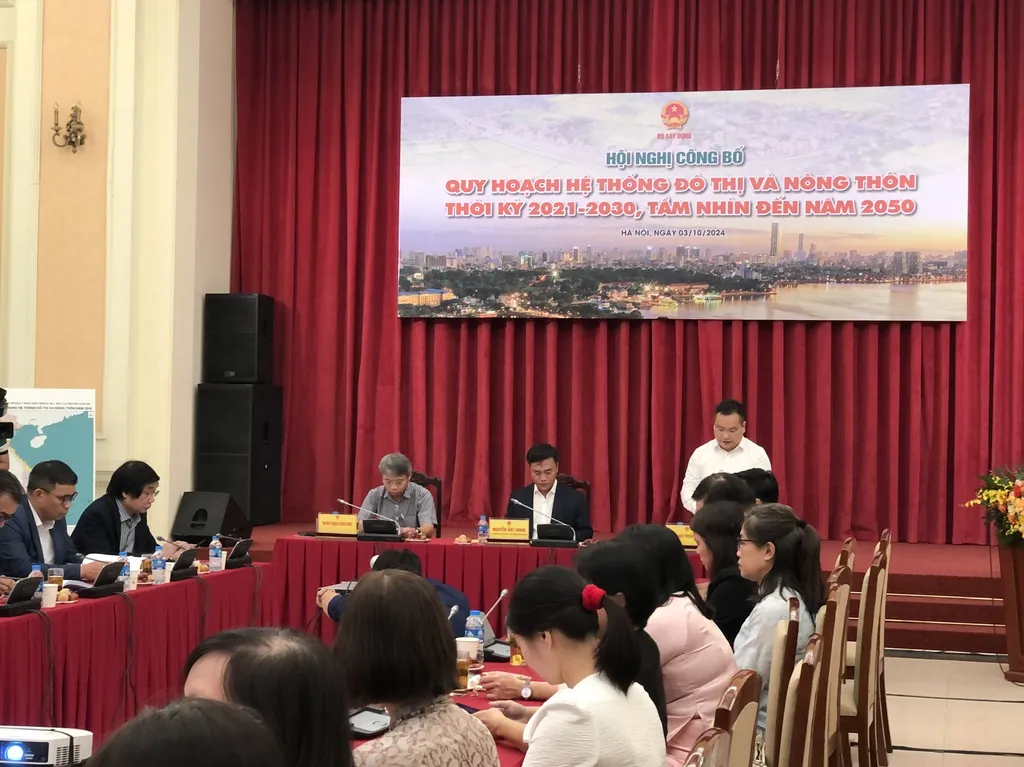Việt Nam unveils comprehensive urban, rural planning vision to 2050
Society – Economy - Ngày đăng : 23:24, 03/10/2024
 |
| The Ministry of Construction holds a conference in Hà Nội on October 3 to announce the urban and rural system planning for the period 2021-2030, with a vision to 2050. — Photo courtesy of the ministry |
HÀ NỘI — The Ministry of Construction (MOC) held a conference in Hà Nội on October 3 to announce the urban and rural system planning for the period 2021-2030, with a vision to 2050.
The event also provided detailed information and data on urban and rural system planning as per regulations and MOC responsibility.
The conference saw the participation of representatives from ministries and departments, people’s committees of provinces and centrally-run cities, the Association of Cities of Vietnam, the Vietnam Urban Planning and Development Association, the Vietnam Construction Association, the Vietnam Architects Association, several international organisations, and various media and press agencies.
UN-Habitat, which has been a partner throughout the preparation of the plans, emphasised that the urban and rural system planning will serve as a strategic tool, contributing to the implementation of the National Master Plan (Resolution 81/2023/QH15) and the Politburo’s Resolution 06 on sustainable urban development to 2030, with a vision to 2045.
The urban and rural system planning identifies urban development as the main economic driver, aiming for harmonious, sustainable development, urban-rural linkages, rational resource use, environmental protection, and the promotion of natural, cultural, social, and economic potential.
The plan proposes developing the urban system in a network model, improving technical and social infrastructure, enhancing the competitiveness of urban areas, and increasing resilience to natural disasters and climate change.
The orientations in the plan align with the Sustainable Development Goals (SDGs), particularly SDG 11 on sustainable cities and communities, as well as the New Urban Agenda (NUA) that UN-Habitat is implementing.
UN-Habitat also highlighted the necessity of adjusting the urban classification system towards an integrated, interdisciplinary and evidence-based approach to improve living quality and enhance the effectiveness of monitoring and evaluating urban development.
During the development of the urban and rural system planning, UN-Habitat collaborated with the Urban Development Agency and utilised resources from the “Institutional Strengthening and Capacity Building for Sustainable Urban Development in Vietnam” project (ISCB), funded by the Swiss State Secretariat for Economic Affairs (SECO), to provide technical support, peer reviews, and policy recommendations.
In the future, as the United Nations agency for urban planning and development, UN-Habitat will continue to cooperate with the Ministry of Construction, the Urban Development Agency, and domestic and international partners to strengthen the urban policies and enhance capacity for urban development in Việt Nam. — VNS
